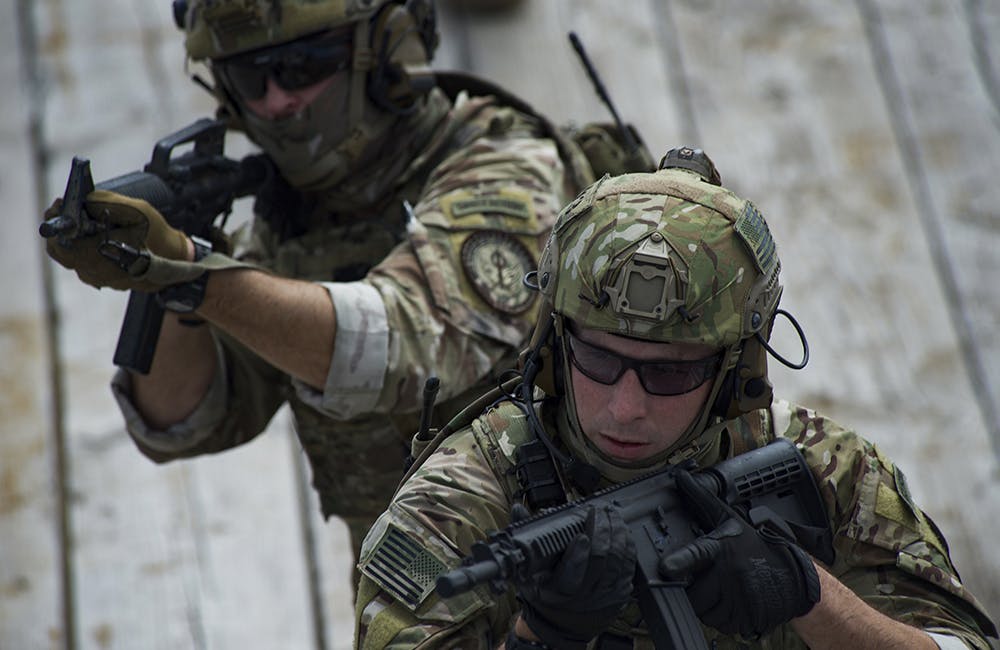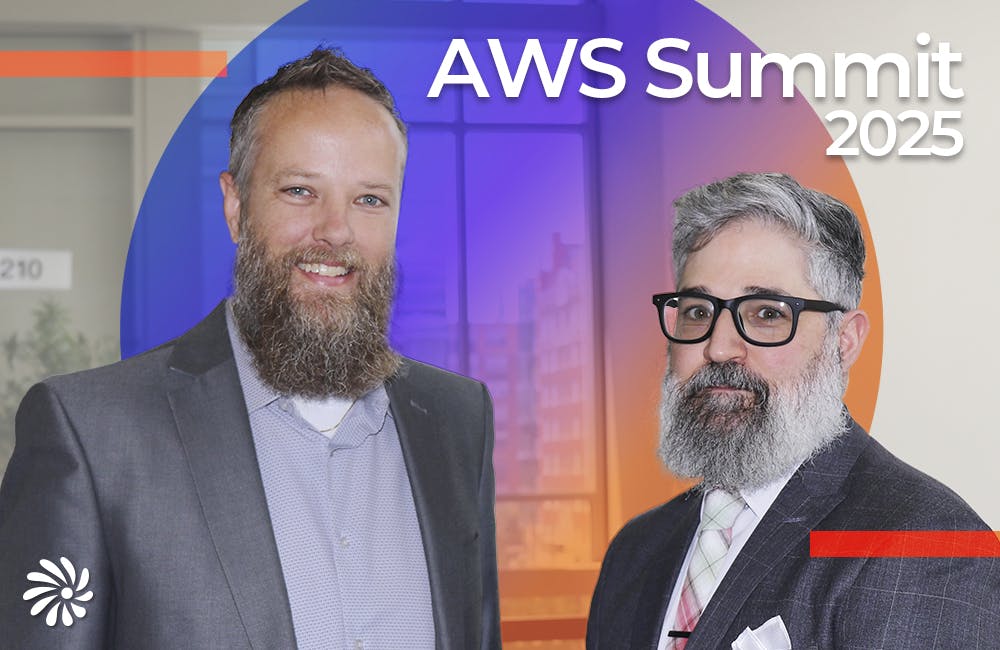Zero Trust Could Help Solve JADC2’s Communication Problems
DOD space leaders want rapid, iterative development of JADC2 capabilities, but need to communicate securely.

The Defense Department must develop minimum viable products (MVPs) at the “speed of need” in order to achieve information and decision dominance. But concerns around communication silos and security challenges can hinder implementation of the Joint All-Domain Command-and-Control (JADC2) concept, according to DOD space leaders at the National Defense Industry Association’s JADC2 Symposium in McLean, Virginia, Monday.
Getting to MVPs at the speed of need will require “disruptive change” across DOD, said Air Force Chief Data and AI Officer Brig. Gen. John Olson, who is also the Space Force lead for JADC2 and the Advanced Battle Management System (ABMS). The Space Force’s digital-first approach will enable digital services necessary to JADC2, such as space data transport.
“When we look at the space transport, networking and space layers, they’re critical to every facet of JADC2,” Olson said during a panel at the symposium Monday. “That’s the common connective tissue when we talk about battle management and command and control. We look at our Space Warfighting Analysis Center — that’s fundamentally a model-based digital engineering approach. We’re taking that soup to nuts all the way from doing the models and driving all the way through the requirements in an iterative feed and trying to get industry data. No longer are we taking a large volume of paper products; we’re taking models into the broader ecosystem and that, in turn, helps to accelerate what we’re doing through the computing process. It’s a much more iterative and agile approach.”
This approach is key for JADC2 acquisition and implementation of capabilities, he added. When asked to sum up his priorities for JADC2 acquisition and implementation, he said DevSecOps and data “is king.”
“[Data is] far more valuable than oil or gold or plutonium,” Olson said. “It needs to be leveraged and enriched. It is absolutely the most important thing. It drives decisions and decision advantage. Concept of operations — we have to get that right [and] criticality of data and stitching it all together. It’s moving out at the speed [of need] and converging across [services] from an interoperability driver to maintain the separate distinct functions we need, but also having commonality.”
Communication silos prevent the military services from getting to that point of commonality. If you ask each of the services to define JADC2, you’ll get a different answer from each, Olson said.
“We’ve got to do is break down the stovepipes of our language,” said Space Development Agency Technical Director Frank Turner during the panel Monday. “I’m really tired of hearing we want to fail fast. We don’t fail, we learn. We want to learn fast.”
Secure communication networking is still a challenge for DOD, which hinders JADC2 implementation, said Keith Krapels, director of applied technologies at the DOD’s research and engineering arm. He provided an example of struggling to communicate with chief scientists from a major defense industry company because they didn’t have access to necessary information nor the SIPRNet to receive it securely.
“We’re not yet to the point from the network standpoint where we can network together coherently,” he said during the panel Monday.
Air Force (Retired) Brig. Gen. Robert Spalding, now CEO of SEMPRE, said software-defined networks can help promote JADC2 interoperability, but he echoed other panelists’ comments on the challenge of cybersecure network communications.
“Because [pretty good phone privacy] (PGPP) has not been designed for military, what do you need to do to harden that capability for the warfighter?” he asked.
Olson believes zero trust and identity, credential and access management (ICAM) are “essential” to JADC2 and “will greatly aid interoperability” and communication between the services, their allied partners and industry.
“We’ve been talking about zero trust for a long time, with Thunderdome. We need to get to real implemented data- and user-level zero trust,” he said. “DevSecOps approach, zero trust, ICAM, data fabrics, mesh cloud from the edge to the node, plus the developmental tech stacks we all use, those are essentials.”
This is a carousel with manually rotating slides. Use Next and Previous buttons to navigate or jump to a slide with the slide dots
-

The Next AI Wave Requires Stronger Cyber Defenses, Data Management
IT officials warn of new vulnerabilities posed by AI as agencies continue to leverage the tech to boost operational efficiency.
5m read -

Federal CIOs Push for ROI-Focused Modernization to Advance Mission Goals
CIOs focus on return on investment, data governance and application modernization to drive mission outcomes as agencies adopt new tech tools.
4m read -

DOD Can No Longer Assume Superiority in Digital Warfare, Officials Warn
The DOD must make concerted efforts to address cyber vulnerabilities to maintain the tactical edge, military leaders said at HammerCon 2025.
4m read -

Marine Corps Operation StormBreaker Slashes Software Delivery Timelines by 17x
New program aims to deliver critical digital capabilities to warfighters at the "speed of relevance" by overhauling traditional processes.
4m read -

Tracking CIOs in Trump's Second Term
Stay informed on the latest shifts in federal technology leadership as new CIOs are appointed and President Trump's second term takes shape.
6m read -

Inside Oak Ridge National Lab’s Pioneer Approach to AI
Energy Department’s Oak Ridge National Lab transforms AI vulnerabilities into strategic opportunities for national defense.
22m listen -

Software Factories Accelerate Federal Modernization Outcomes
IT leaders from Nutanix and SAIC explain how software factories streamline tech development, modernize legacy systems and accelerate adoption of emerging technologies like AI.
34m watch -

AWS Summit: Innovation Accelerates IT Delivery at DOD
Marine Corps Community Services is tackling outdated IT processes with agile development and cutting-edge cloud security to deliver mission-critical capabilities faster.
12m watch -

AWS Summit: NIST Secures High-Performance Computing Against Evolving Threats
NIST’s Yang Guo reveals the broad attack surface of high-performance computing and explains developing guidance and future-proofing security strategies.
9m watch -

Trump Overhauls Federal Cybersecurity with New Executive Order
The new directive aims to strengthen digital defenses while rolling back "burdensome" software requirements and refocusing AI security.
3m read -

AWS Summit: Forging Successful Cloud Modernization Partnerships
Industry leaders share insights on the critical role industry partnerships have in enabling government agencies to navigate procurement challenges for cloud and zero trust solutions.
24m watch Partner Content -

CISA's CVE Program and Why it Matters for Zero Trust
The vulnerability program provides the cybersecurity community visibility into software as part of a key pillar of CISA's zero trust model.
5m read
















